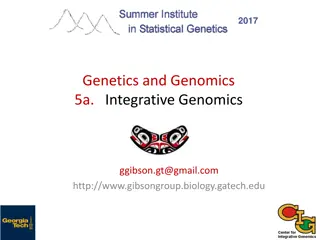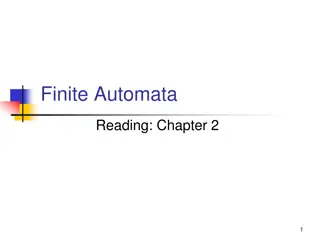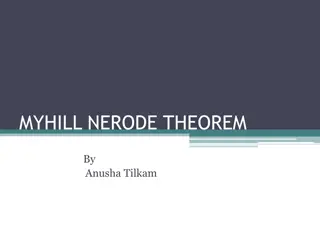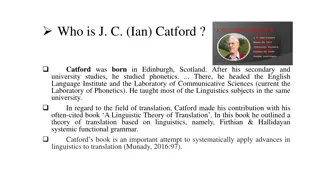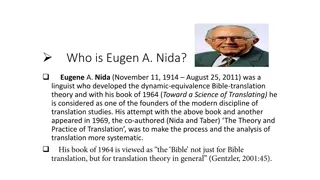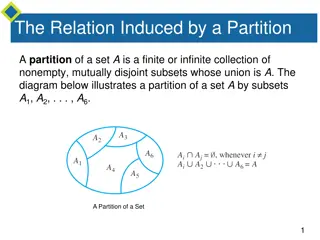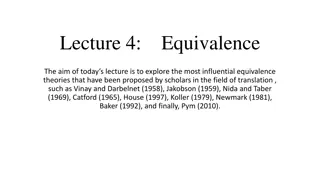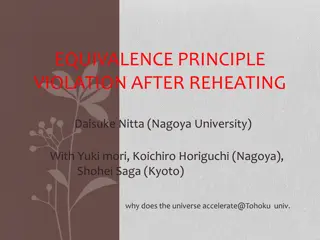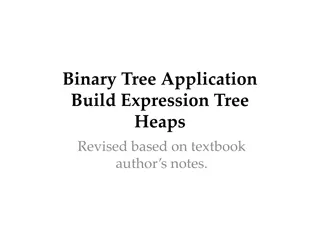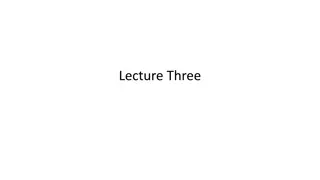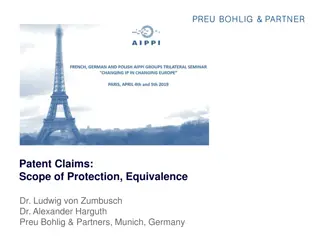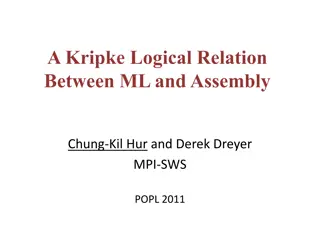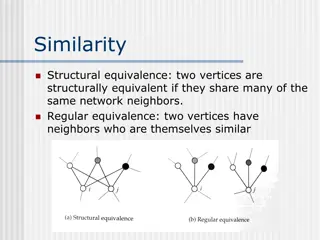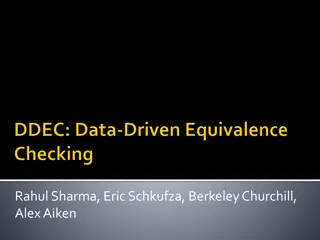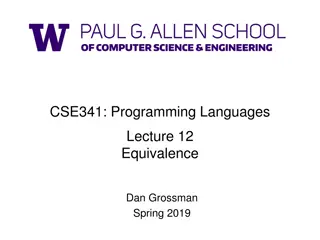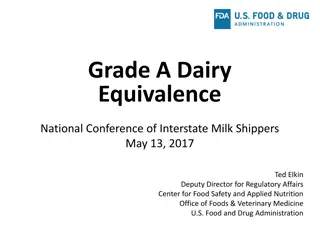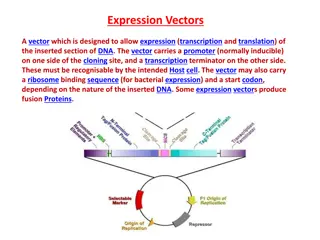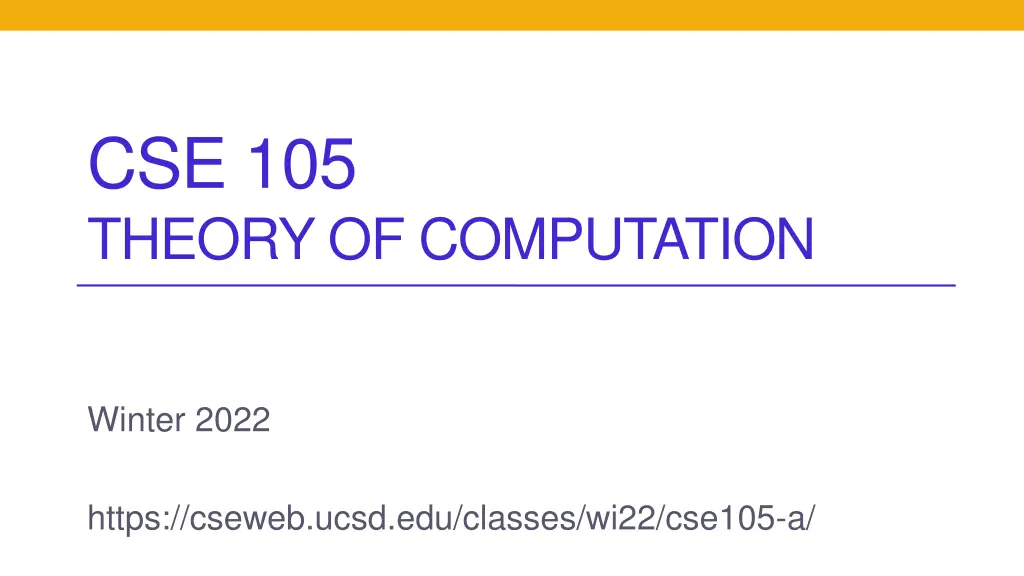
Theory of Computation Winter 2022 Learnings
Explore learning goals in CSE 105: Theory of Computation for Winter 2022, covering regular expressions, automata, syntax languages, and more. Practice applying closure in regular expressions and analyze examples to enhance understanding.
Download Presentation

Please find below an Image/Link to download the presentation.
The content on the website is provided AS IS for your information and personal use only. It may not be sold, licensed, or shared on other websites without obtaining consent from the author. If you encounter any issues during the download, it is possible that the publisher has removed the file from their server.
You are allowed to download the files provided on this website for personal or commercial use, subject to the condition that they are used lawfully. All files are the property of their respective owners.
The content on the website is provided AS IS for your information and personal use only. It may not be sold, licensed, or shared on other websites without obtaining consent from the author.
E N D
Presentation Transcript
CSE 105 THEORY OF COMPUTATION Winter 2022 https://cseweb.ucsd.edu/classes/wi22/cse105-a/
Today's learning goals Sipser Ch 1.2, 1.3 Decide whether or not a string is described by a given regular expression Design a regular expression to describe a given language Convert between regular expressions and automata
Inductive application of closure R is a regular expression over if Sipser 1.52 p. 64 Watch out for overloaded symbols! is shorthand for (0 U 1) if = {0,1}, Parentheses may be omitted, R+means RR*, Rkmeans R concatenated with itself k times
Syntax Languages The language described by a regular expression, L(R): L ( (0 U 1) U1 ) = { } L ( ) = { } L ( ) = { }
L(R) Which of the following strings is not in the language described by ( ( (00)*(11) ) U 01 )* A. 00 B. 01 C. 1101 D. E. I don't know
L(R) Let L be the language over {a,b} described by the regular expression ((a U ) b*)* Which of the following is not true about L? A. Some strings in L have equal numbers of a's and b's B. L contains the string aaaaaa C. a's never follow b's in any string in L D. L can also be represented by the regular expression (ab*)* E. More than one of the above.
Regular expressions in practice Compilers: first phase of compiling transforms Strings to Tokens keywords, operators, identifiers, literals One regular expression for each token type Other software tools: grep, Perl, Python, Java, Ruby,
"Regular = regular" Sipser Theorem 1.54 p. 66 Theorem: A language is regular if and only if some regular expression describes it. Lemma 1.55: If a language is described by a regular expression, then it is regular. Lemma 1.60: If a language is regular, then it is described by some regular expression
L(R) to NFA (to DFA) Lemma 1.55, page 67 Idea: basic regular expressions are easy to implement as DFA, for inductive step of definition, use closure under regular operations. E.g.: build NFA recognizing the language described by (00 U 11)*
DFA to regular expression Book version Idea: use intermediate model GNFA whose labels are regular expressions Lemma 1.60, page 69 GNFA: start state all, single accept, one arrow from all to all GNFA with fewer states 2 state GNFA Regular expression DFA E.g.: build regular expression describing language recognized by
DFA to regular expression My version Idea: directly from NFAs to regular expressions Use induction on number of edges in NFA Lemma: for any ? 0, if ? is a NFA with ? edges, then there is a regular expression ?? such that ?(??) = ?(?)
DFA to regular expression My version Lemma: for any ? 0, if ? is a NFA with ? edges, then there is a regular expression ?? such that ?(??) = ?(?) Notations: Start node of ? is ? Accept nodes of ? are ? Base case: ? = 0. There are two cases: ? ?: In this case ? ? = ? and ??= ? ? ?: In this case ? ? = {} and ??= ?
DFA to regular expression My version Lemma: for any ? 0, if M is a NFA with ? edges, then there is a regular expression ?? such that ?(??) = ?(?) Notation: Start node of ? is ?, accept nodes of ? are ? Induction case: Assume true for n-1, prove for n. Pick edge ? ,? in ? labeled by ? ? (that is: ? ? ? ,? ) Let ?1 be ? with the edge ? ,? removed Note: ?1 has n-1 edges Induction: exists regular language ?1 such that ?(?1) = ?(?1) Notice:? ?1 ?(?) Next goal: complete the difference ?(?)\L(?1)
DFA to regular expression My version Induction case: Assume true for n-1, prove for n. Notation: ? start node of ?, ? accept nodes of ? ?1 is ? with some edge ? ,? labeled by ? removed Define 3 new NFAs: ??????: same as ?1, but with start node ? and accept nodes {? } ???????: same as ?1, but with start node ? and accept nodes {? } ????: same as ?1, but with start node ? and accept nodes ? All NFAs with n-1 edges, so can apply induction for each Completing the proof: ? ? = ? ?1 (? ?????? ? ? ??????? ? ? ????)
DFA to regular expression My version
All roads lead to regular sets? Are there any languages over {0,1} that are not regular? Yes: a language that is recognized by an NFA but not any DFA. A. Yes: there is some infinite language of strings over {0,1} that is not described by any regular expression. B. No: all languages over {0,1} are regular because that's what it means to be a language. C. No: for each set of strings over {0,1}, some DFA recognizes that set. D. I don't know. E.
Counting Fact: a countable union of countable sets is countable. Fact: {0,1}* is countably infinite. X* is countably infinite when X is finite. Fact: the set of subsets of a countably infinite sets is uncountable. Fact: there are countably many DFA with ={0,1} Fact: there are countably many regular languages over {0,1}
Counting Fact: a countable union of countable sets is countable. Fact: {0,1}* is countably infinite. X* is countably infinite when X is finite. Fact: the set of subsets of a countably infinite sets is uncountable. Uncountably many languages over {0,1} Fact: there are countably many DFA with ={0,1} Fact: there are countably many regular languages over {0,1} over {0,1} Countably many regular languages
Proving nonregularity How can we prove that a set is non-regular? A. Try to design a DFA that recognizes it and, if the first few attempts don't work, conclude there is none that does. B. Prove that it's a strict subset of some regular set. C. Prove that it's the union of two regular sets. D. Prove that its complement is not regular. E. I don't know.
Where we stand There exist non-regular sets. If we know that some sets are not regular, we can conclude others are also not regular judiciously reasoning using closure properties of class of regular languages. No example of a specific regular set ... yet.
Bounds on DFA in DFA, memory = states Automata can only "remember" finitely far in the past finitely much information If a computation path visits the same state more than once, the machine can't tell the difference between the first time and future times it visited that state.

